Evolving Defensive Thinking
by Michael McGuerty
New Art of Defence in Chess, by Andrew Soltis, Batsford 2014, Paperback, Figurine Algebraic Notation, 228pp. $23.95 (ChessCafe Price $20.47)
Grandmaster Andy Soltis is a popular Chess Life columnist, the chess correspondent for the New York Post, and the author of numerous classics of chess literature, including Pawn Structure Chess, The Inner Game of Chess, Rethinking the Chess Pieces, and many others. He was inducted into the U.S. Chess Hall of Fame in 2011.
The Art of Defense in Chess was first published by McKay in 1974 using descriptive notation. As Soltis explains in the introduction, he realized the need for an updated edition when leafing through the pages of the earlier work and saw that it was “drastically out of date” and needed to be completely rewritten.
The material in this new edition is divided as follows:
- What is Defense?
- The Spirit of Defense
- New Defense
- Weapons of Defense
- Counterplay
- Risk Management
- Sacrifice
- Prophylaxis
- You Against Tal
- Last Chance to Defend
Within each chapter are separate subsections on particular themes, with quizzes to test the reader at the end of each chapter. Overall, there are thirty-nine test positions and 280 diagrams throughout the book. Soltis notes that modern players think differently than the top players from thirty years ago and provides the following example:
Naiditsch – Svidler
Dortmund 2004
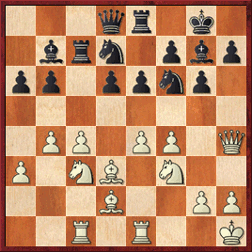
[FEN”3qr1k1/1brn1pbp/pp1ppnp1/8/1PP1PP1Q/P1NB1N2/3B2PP/2R1R2K b – – 0 24″]
Black to play
In 1974, the year I wrote The Art of Defense in Chess, this would have been considered a favorable position for White, a plus-over-equals advantage, at least:
White has a substantial advantage in space. Black has failed to execute any of the freeing moves, such as ….b5 or …d5, that he needs to survive in this Maroczy Bind pawn structure. White will eventually find a winning plan, such as with Re3, Ng5, Rh3 and a breakthrough around h7.
And White’s attack would likely have succeeded if Black played in the manner that served so well for much of the 20th century, with cautious moves such as ….Nf8 to protect h7 and to avert 2 e5? because of 2…Bxf3 3 gxf3 dxe5 and …Qxd3.
But today most masters would prefer to play Black, particularly after 1…Qa8!.
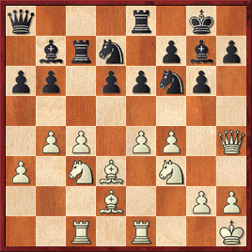
[FEN”q3r1k1/1brn1pbp/pp1ppnp1/8/1PP1PP1Q/P1NB1N2/3B2PP/2R1R2K w – – 0 25″]
White to play
Why? Because we realize now that White’s space advantage, in this and similar positions, is vastly overrated. And we see Black has a powerful plan of 2…Rfc8 and 3…Rxc4! 4 Bxc4 Rxc4. That trumps anything White is doing on the kingside.
But you can’t sacrifice in even positions, can you? That’s what 1974 would say if it could speak.
Yes, you can, we say today. Black would have one pawn for the Exchange and powerful pressure on the e4-pawn as compensation after 4…Rxc4.
In fact, White retreated 2 Qh3 (!) to anticipate threats along the a8-g2 diagonal. He was no longer acting as an attacker. He was beginning to think like a defender. Black continued to think like a counter-aggressor, with 2…Rec8.
Soltis then walks the reader through the rest of the game until White’s resignation after 39…Ne4! (or the sixteenth move according to his numbering). However, even though much of the material has been revised, many of the same examples are still presented. For instance, the very first example from the first chapter, “What is Defense?”:
When the first edition of this book appeared, readers told me how struck they were by the very first example. It wasn’t a famous game. Far from it. But there was something about the way it unfolded:
Klyavin – Zhdanov, Latvian Championship 1961
1 e4 c6 2 Nc3 d5 3 Nf3 g6 4 d4 Bg7 5 h3 a6 6 Bf4 Nf6? 7 e5 Ng8 8 Qd2 b5 9 Be2 h6 10 O-O-O e6
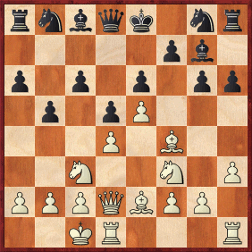
[FEN”rnbqk1nr/5pb1/p1p1p1pp/1p1pP3/3P1B2/2N2N1P/PPPQBPP1/2KR3R w kq – 0 11″]
White to play
It didn’t take readers long to conclude that White has a very strong position. He has brought out nearly all of his pieces while Black’s only developed piece, his KB, ‘bites on granite’ at e5. Black’s queenside is riddled with holes on dark squares and he has just locked in his other bishop. You might expect a quick mating attack. You would be right:
11 g4 Nd7 12 Bg3 Bf8! 13 Rdf1 Nb6 14 Nd1 a5 15 Ne1 b4 16 Nd3 Nc4 17 Qe1 Qb6 18 b3 Qxd4! 19 bxc4 Qa1+ 20 Kd2 dxc4 21 Nf4 Qxa2 22 Ke3!? Bb7 23 Qd2 g5 24 Nh5 c3 25 Qd3 Rd8 26 Qe4 Bc5+ 27 Kf3 Rd4 28 Qe3 Qd5+ and mates.
Yes, Black delivered the mate. Actually, with a good understanding of defensive play the game’s result should not be at all surprising to you. But that understanding is the most difficult chess knowledge to acquire.
The diagrammed position above is indeed striking, mostly because Black ignores the guideline about developing pieces in the opening, and is not swiftly punished for this transgression by White. In fact, if you turn on your chess engine, you will see it go from a quick +- evaluation to +/- and then +/= the longer it runs and depending on which engine. As Soltis notes later in the book, “Understanding what is a vulnerable weakness and what is just an apparent one is extraordinarily difficult.”
Yet, Soltis is not making the argument that new themes of defense are needed that did not exist before. He is simply pointing out that the approach to these themes are more nuanced in today’s practice and that defensive techniques have evolved since 1974. He characterizes good defense as “intensely tactical” and “perhaps 90 percent tactics.”
According to Soltis, “Anyone who plays over attacking games of the 21st century will be struck by how they differ from 20th century games.” He writes that new ways to attack are being met with new ways to defend and that this is a book about the “New Defense.” According to the back cover blurb, “Most chess games are not won – they are lost. There are many chess books that show you how to clinch the win when you have the advantage, but New Art of Defence offers tips and techniques on how to get out of trouble – and even turn the tables – when the chips are down.”
Let’s look at one more example, from the section on “Prophylaxis and Counterplay” in the chapter on “Prophylaxis.”
Aron Nimzovich elaborated on the uses of prophylaxis in the 1920s. However, the emphasis then and for decades to come was on safety for the sake of safety. It was the ounce of prevention to avoid needing a pound of cure. Prophylaxis was considered an alternative to counterplay.
New Defense changes the focus: Prophylaxis can be the necessary preparation for counterplay.
Anand – Ivanchuk, Leon 2008
1 e4 c5 2 Nf3 e6 3 d4 cxd4 4 Nxd4 Nc6 5 Nc3 Qc7 6 Be2 a6 7 0-0 Nf6 8 Be3 Be7 9 f4 d6 10 Qe1 0-0 11 Qg3 Nxd4 12 Bxd4 b5 13 a3 Bb7 14 Kh1 Rad8 15 Rae1 Rd7 16 Bd3 Re8 17 f5 e5 18 Be3
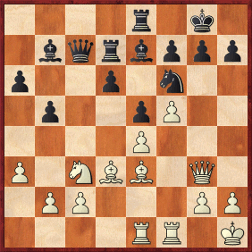
[FEN”4r1k1/1bqrbppp/p2p1n2/1p2pP2/4P3/P1NBB1Q1/1PP3PP/4RR1K b – – 0 18″]
Black to play
White’s 13th move stopped …b4. His 14th move anticipated lines in which the center is opened and Black delivers a key check on the open g1-a7 diagonal. These are common prophylactic moves in the Sicilian Defense.
Black also took a prophylactic step, …Rad8 to deter e4-e5. For example, 15 e5 dxe5 16 fxe5? Rxd4.
In the diagram he played 18…Kh8!. That prevented Bh6. But it also prepared …d5. The push wouldn’t work immediately. 18…d5? 19 exd5 Nxd5? 20 Nxd5 Bxd5 21 f6 or 21 Bh6 Bf6 22 Bxg7 Bxg7 23 f6.
White tried to exploit the king’s new position with 19 Bg5, hoping for Qh4, Re3-h3 and then Bxf6/Qxh7 mate. For example, 19…Bc6 20 Qh4 Qb7 readies 21…a5 and 22…b4. But 22 Re3 makes 23 Rh3 strong.
Black was happy to trade dark-squared bishops, 19…Nh5! 20 Qh4 Bxg5 21 Qxg5 Nf6, because it put him on the verge of counterplay with …d5 (or …a5 and …b4 first). Play went 22 Rf3 Qc5 23 Rg3 Rg8.
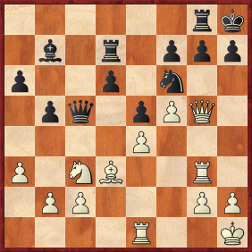
[FEN”6rk/1b1r1ppp/p2p1n2/1pq1pPQ1/4P3/P1NB2R1/1PP3PP/4R2K w – – 0 24″]
White to play
The kingside is secure and Black, with a powerfully placed queen, is at least equal. After 24 Rh3 he could have broken in the center with 24…d5 25 exd5Bxd5 (not 25…Nxd5?? 26 Rxh7+! Kxh7 27.Qh5 mate).
He preferred 24…b4 25 axb4 Qxb4 26 Rb1 Rc7 and won after ….d5.
Soltis provides advice on how to anticipate threats, accept sacrifices, and minimize losses so as to stay calm and collected under fire and develop the proper spirit and tough mental attitude required of a good defender. While many average players overreach and turn to Aagaard or Dvoretsky for instruction that is above and beyond their level of understanding, they should be turning to Soltis for commonsense advice that is simply presented and pragmatically explained. Work your way through New Art of Defence in Chess before picking up more advanced treatises and you will be well rewarded.
My assessment of this product:
![]()
Order New Art of Defence in Chess
by Andrew Soltis
A PDF file of this week’s review, along with all previous reviews, is available in the ChessCafe.com Archives.
© 2015 ChessEdu.org. All Rights Reserved.
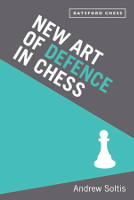
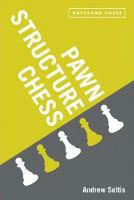
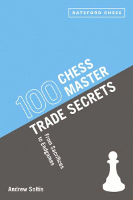

Leave a Reply